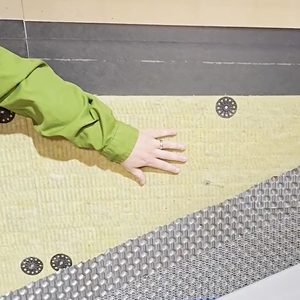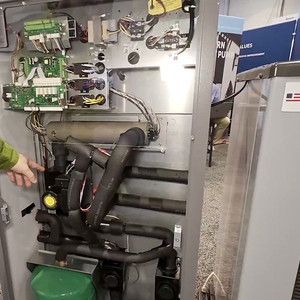I’m a relatively inexperienced DIY’r and am getting ready to paint the exterior of my house. After some research (an article in Consumer Reports) I decided to use Valspar Duramax Exterior Semi-Gloss for the trim. The salesman at Lowe’s, and indeed the writing on the can, assured me that no primer was necessary with this paint. I have some wood rot and so will be painting over epoxy, over bare (sanded) wood in places, as well as over old, cleaned paint. So the question is, would I be better off applying primer despite the assurances of the salesman, or am I okay just applying the paint without primer?
Discussion Forum
Discussion Forum
Up Next
Video Shorts
Featured Story

These defensive details give homes a better chances of surviving wildfires.
Featured Video
Builder’s Advocate: An Interview With ViewrailHighlights
"I have learned so much thanks to the searchable articles on the FHB website. I can confidently say that I expect to be a life-long subscriber." - M.K.
Fine Homebuilding Magazine
- Home Group
- Antique Trader
- Arts & Crafts Homes
- Bank Note Reporter
- Cabin Life
- Cuisine at Home
- Fine Gardening
- Fine Woodworking
- Green Building Advisor
- Garden Gate
- Horticulture
- Keep Craft Alive
- Log Home Living
- Military Trader/Vehicles
- Numismatic News
- Numismaster
- Old Cars Weekly
- Old House Journal
- Period Homes
- Popular Woodworking
- Script
- ShopNotes
- Sports Collectors Digest
- Threads
- Timber Home Living
- Traditional Building
- Woodsmith
- World Coin News
- Writer's Digest


















Replies
Is it worth the risk after all the labor you undertook in the prep of the siding?
If you absolutely must for go a primer than go with a BenjaminMoore or SherwinWilliams primerless product instead of the Valspar.
In this case you do get what you pay for and in the big picture the price of the paint is miniscule compared to your labor.
I had no intention of going primerless until the salesman assured me that for the paint I'd chosen, using a primer was totally unnecessary. But the stuff wasn't that cheap ($35/gal (5-gal containers are not available)). I'm willing to change paints, and probably will after reading yours and others comments. However I had the Valspar tinted and so cannot return it...of course. Thanks for the advice.
Sometimes Lowes aren't good for much but one thing they are good for is customer satisfaction in their paint department
in that you can return the gallons and they will reimburse you for the paint and place it in their bargain mis-tint cart at discount to recoup their investment.
I've seen it happen with some amazing colors that I would be embarrassed to return.
Number of years back my dad was wanting his house painted so I said I'd do it and saw the paint color he'd already bought.
It was a really ugly tan/orange kind of thing which when I told him it was a bit much he recanted to a tan.
I didn't want to dare try to return the things but thought what the hey, swallowed my pride and took them in.
No questions.
be you can get, some sat-is-factshun...
Edited 10/26/2008 9:22 pm ET by rez
Here's a thought.
I purchased a similr product from Porter Paint, it's called "Permanizer", a LOT like SW's "Duration" both are 50 yr paints, and are about like liquid caulk. You have to have have a good technique to get it to lay out nice. Really, you do.
I have a few Jeld-wen or something ext. doors that the jambs were preprimed, I used the Permanizer paint over the factory primer and it all failed, yet on some pine 1x8 fascia that was raw, it stuck like glue.
I am contracting a huge remodel where the HO is using SW A-100 oil base primer and two coats of Duration Gloss on all ext. trim and I have to say, I'd skip the primer, or use BIN..the A-100 is nasty stuff and won't lay out nice or flat.
But to your question,I have little faith in Valspar PAINTS, the other products are pretty much OK, but paint? Not quite there as far as I can see. Also don't go with a salesmans pitch at Lowes, they aren't painters, and probably may not have ever used the stuff they push.
I think you'd be better off with a BIN oil based primer on some areas ( you mentioned Epoxy) and no primer on raw wood, with these paints. ANY primer MUST be FRESH for it to work, if you prime in the fall and paint in spring, you will have issues. Get it clean, prime and paint ASAP.
Spheramid Enterprises Architectural Woodworks
Repairs, Remodeling, Restorations
They kill Prophets, for Profits.
http://www.youtube.com/watch?v=Dj_oEx4-Mc4
"if you prime in the fall and paint in spring, you will have issues"Indeed!every primer can I ever read says 30 days max exposureAny second coat of exte4rior should be fresh or you are laying it onto an oxidized layer of dust instead of bonding it to the previous coat. Not to mention mildew and other scuzzies that grow.
Welcome to the Taunton University of Knowledge FHB Campus at Breaktime. where ... Excellence is its own reward!
Per Sherwin-williams
"DURATION can be used as a self-priming coating on many bare surfaces. When used this way, the first coat of DURATION acts like a coat of primer and the second coat provides the final appearance and performance. However, some specific surfaces require specialized treatment."
I'd bet the valspar instructions are similiar, So that's some pretty expensive primer.
I've read some stuff on paint cans that I know just isn't true. Most of it is true, but they can claim anything at all and when it doesn't work, they'll say "oops, sorry... how about a free can of paint?". They won't come out and re-paint your house.
Your time is worth something. Play it safe and use a primer. It certainly can't hurt. I think it's well worth the additional insurance.
Use an oil-based primer for any bare surfaces, repaired wood, oil-base paint finishes, chalky or chipped surfaces. All other surfaces (there's probably not much left) can get a 100% acrylic primer. If it's a painted surface and the old paint is in really good shape, then you might consider skipping the primer.
I've read "self-priming" on some paint cans. I don't know what that means. After all, you can always apply a 2nd coat of every paint that's ever been made. Since there's no primer in between these 2 coats, doesn't that make all paints "self-priming"?
Use a good primer - I like Cabots Problem Solver Alkyd.
Jeff